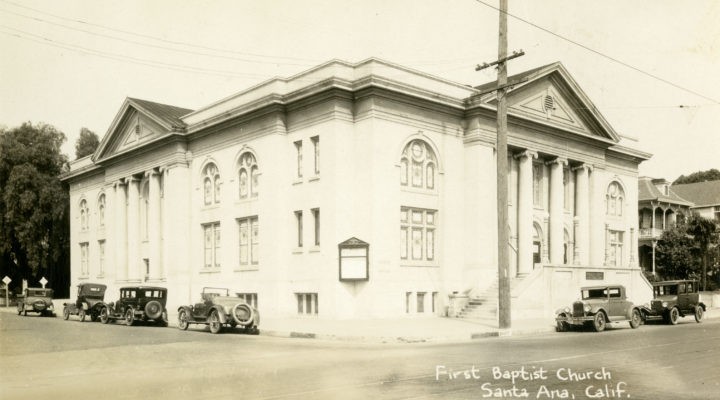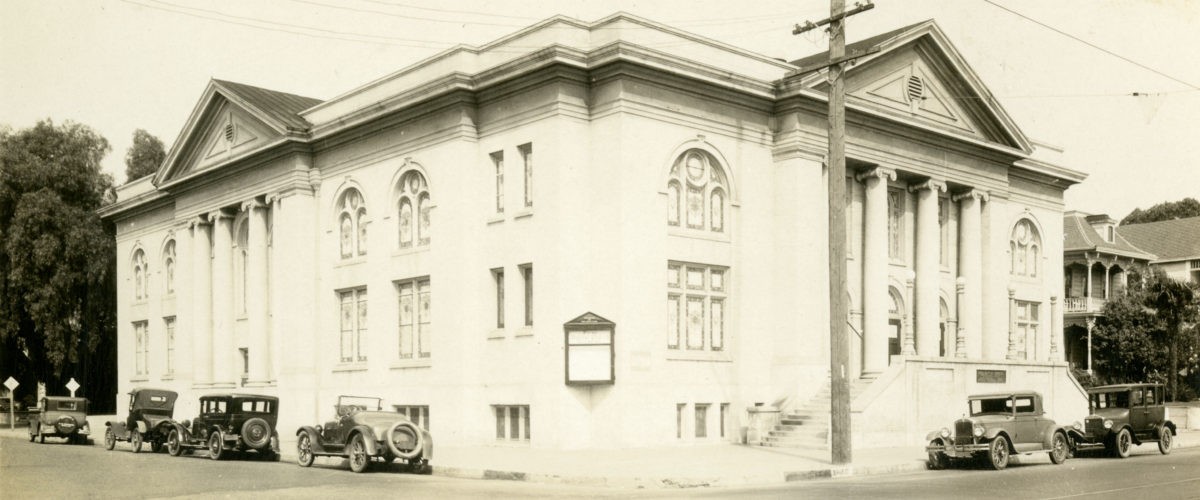Shortly before it ceased being a congregation in June, First Baptist Church of Santa Ana, California worshiped at nearby Second Baptist Church.
The nostalgia and irony were evident for the two congregations because it was the historically white First Baptist that helped birth historically black Second Baptist nearly 100 years ago.
“It felt like we were taking in our parent who wasn’t able to live on their own,” said Ivan Pitts, the senior pastor at Second Baptist, which is now known as SBC.
The currents that led one church to close – decades of cultural, economic and demographic change – contributed to the other experiencing congregational growth, ethnic diversity and a thriving multi-site expansion.
‘In slow decline’
Progressive First Baptist Church had seen such growth, too, decades ago.
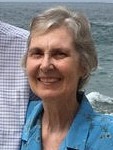
Pat Purdy
It was founded in the 1870s and grew to around 800 members by the 1970s. It was consistently active in outreach and generous in its social witness and helping others, said Pat Purdy, the last moderator of the church.
One of its most meaningful achievements, she said, was helping a group of African-American Christians launch Second Baptist in 1923. It is the oldest black church in Orange County.
But changing times eroded First Baptist’s membership over the years.
“The congregation had been in a slow decline that continued on until it became difficult to sustain the building,” Purdy said, adding the property was sold in 2013.
“We were very happy (the property) went to another church – and one with a commitment to outreach to the community,” she added.
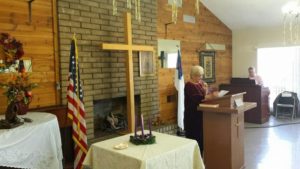
First Baptist Church gathered for a time in the clubhouse at mobile home community, shown here in 2015.
The remaining members continued to worship there until services were moved to a facility at a mobile home community.
About a year and a half ago, the congregation began worshiping at SBC. Down to about six active members, the church made final financial arrangements with their host and held the final First Baptist service on June 30, Purdy said.
“We donated money to Second Baptist to preserve our heritage and for different good causes in the name of First Baptist Church,” she said.
‘It was up or down’
It couldn’t be more different at SBC.
“You can come at 11 (a.m. Sundays) and see four different churches worshiping at the same time in different spaces, but serving together on Tuesdays in a food pantry, in community outreach, in Sunday school, VBS and small group ministries,” Pitts said.
But it wasn’t easy getting there.
The church has undergone its share of challenges, said Pitts, who has led the congregation since December 2012.

Ivan Pitts
When he arrived, members were reeling from the death of their beloved and long-time senior pastor, John Edward Nix-McReynolds.
“When he passed, it sent the church into a tailspin,” Pitts explained. Nix-McReynolds was 57 when he died in 2011.
The impact reached even into the surrounding neighborhoods, the Los Angeles Times reported.
“Whether it was a teenager’s personal drama or a community tragedy, the Rev. John Edward Nix-McReynolds was known for his calm, caring and focused demeanor – one that could bring people together,” the newspaper said.
The loss propelled church members into a period of mourning and pastoral transition they did not foresee or want, Pitts said.
“The church was poised to either rebound or drown. It was up or down.”
‘You can find a place here’
But the church has a comeback spirit woven into its DNA. Life-long member Connie Jones said she witnessed that during the Civil Rights era.
“I remember issues of parents not being able to purchase homes, challenges in schools and getting grants to go to school,” said Jones, who was baptized in the church in 1966. “But we were grounded in a church where there was solace and respite and the sharing of the trials and challenges.”
The way ahead after Nix-McReynolds’ loss was difficult but one the congregation had to embrace, said Jones, who served on the committee that called Pitts to the Second Baptist pulpit.
“The theme is that we have to be flexible and transparent,” she said.
That meant discovering a new vision and self-understanding.

Second Baptist Church, now known as SBC.
“We had been known for over 90 years as a black, traditional church in a community that was no longer black and traditional,” Pitts said. “So, we had to wrestle with who we were and who we were becoming.”
The new pastor embarked on a listening tour with questions about church identity and its opportunities to thrive.
“I didn’t come in with a great plan. I came in listening and learning,” he said.
The vision identified was to “be a beacon of love for every nation, generation and situation” and to encourage “a unique ethnic flavor” and openness to people regardless of socio-economic status, he says.
“No matter your background, whether you’re homeless or a corporate VP, you can find a place here.”
But the aim also is to stay true to the church’s historic character.
“We didn’t want to be all things to all people,” Pitts said. “We are still authentically who we were, but the environment is welcoming.”
Sometimes that means inviting other congregations to worship on campus, as SBC with a Vietnamese church.
“A couple times a year we worship together as one church and a couple times a month we serve the community through a food pantry,” Pitt says.
“We don’t get caught up in theology, on same-sex marriage, etc. It starts with a very basic question: do you believe hungry people should have food?”
‘A beautiful congregation’
An unanticipated outcome of that focus was to become a multi-site church in 2016. A congregation located about 20 miles south approached Pitts asking SBC to adopt it as a campus church.
“We didn’t look for it,” Pitts said of what is now called SBC Lake Forest.
It was a way of keeping another congregation alive and growing and living into the gift of life First Baptist once provided.
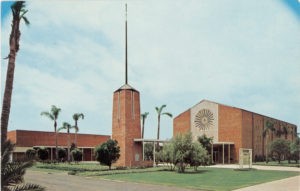
First Baptist Church in a postcard featuring its last location in Santa Ana. (Orange County Archives)
“First Baptist Church was the progressive church of its day in conservative Orange County and helped Second Baptist start its own church,” he said. “They provided resources, hymn books, pews and even financial resources.”
Jones said the fellowship between the two congregations was close throughout the decades. They cooperated on children’s programs and Second Baptist members enjoyed access to the larger First Baptist sanctuary for weddings, funerals and musicals.
“They had a beautiful congregation and some of our members actually went there to join,” Jones said.
Pitts praised the courage and faith displayed by First Baptist members as they put others ahead of themselves – a century ago and today. It underscores the dedication SBC must display as it moves forward with that legacy.
“You can’t handle numerical growth without spiritual growth,” he said.

